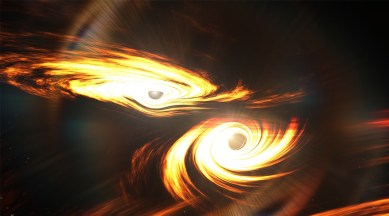LIGO will be back in 2023, able to detect even ‘fainter’ gravitational waves
The Laser Interferometer Gravitational-wave Observatory (LIGO) is a massive laser interferometer that helped scientists confirm the existence of gravitational waves in 2016, working in tandem with the Virgo observatory in Italy.

The Laser Interferometer Gravitational-wave Observatory (LIGO) is scheduled to begin its fourth run of operations in March 2023 after over two years of maintenance work and upgrades. During its latest operational run, LIGO and its two detectors will work in tandem with the Virgo Interferometer in Italy and the KAGRA observatory in Japan.
But this time, after two years of major upgrades to LIGO’s more sensitive detectors will be able to sense even “fainter” gravitational waves than before. Gravitational waves are space-time ripples caused by the most explosive and energetic processes in the universe. Their existence was initially predicted by Albert Einstein in 1916 in his general theory of relativity.
LIGO is the world’s largest gravitational wave observatory and comprises of two massive laser interferometers that are located about 3,000 kilometres apart. It is used to detect and understand the origins of gravitational waves. Interferometers can calculate very small measurements that cannot be done using conventional equipment.
For example, LIGO’s interferometers can measure a distance that is 1/10,000 smaller than the width of a proton. This is why scientists were able to confirm the existence of gravitational waves for the first time in 2016 with the help of LIGO and Virgo.
With its latest upgrades, LIGO is calibrated to be sensitive enough to detect gravitational waves from two neutron stars colliding over 619 million light-years.